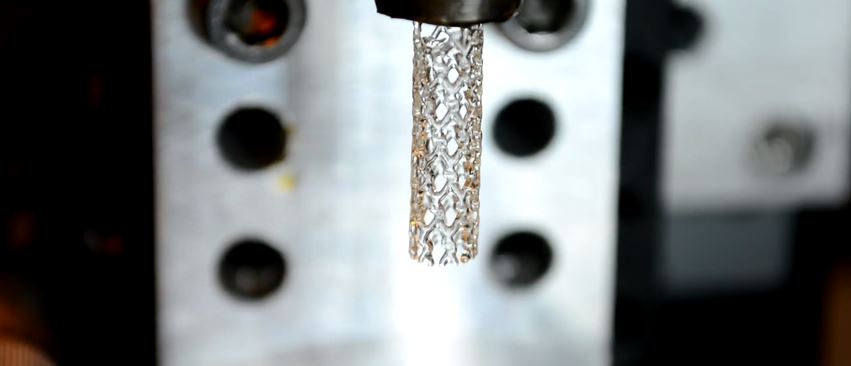There was significant excitement earlier this year when Abbott released the Absorb GT1 Bioresorbable Vascular Scaffold System (BVS), the first absorbable stent for use in cardiac care. Now researchers at Northwestern University’s McCormick School of Engineering are employing 3D-printing to push toward the next revolution in vascular stent technology.
In research published in the online journal Advanced Materials Technology, Northwestern engineers demonstrate the feasibility of flexible, customized stents printed with a bioresorbable, antioxidant, photopolymerizable polydiolcitrate biomaterial. The devices perform as effectively as more commonplace metal stents, but the 3D-printing approach allows them to be individually designed for each patient.

(Image credit: screengrab from Northwestern video)
In a release from Northwestern University, Guillermo Ameer, DSc, one of the researchers on the project, notes the personalized nature of the devices will help prevent negative outcomes.
“There are cases where a physician tries to stent a patient’s blood vessel, and the fit is not good,” Ameer explains. “There might be geometric constraints in the patient’s vessel, such as a significant curvature that can disturb blood flow, causing traditional stents to fail. This is especially a problem for patients who have conditions that prevent the use of blood thinners, which are commonly given to patients who have stents. By printing a stent that has the exact geometric and biologic requirements of the patient’s blood vessel, we expect to minimize the probability of these complications.”
The stents are created with a polymer that is stronger than than the plastics used in other biodegradable stents. According to Ameer and his colleague in the research, Cheng Sun, PhD, the added fortitude of the polymer means it can be fabricated with a thinner profile, putting its sizing more in line with smaller metal wire stents.
The team will now move on to testing to determine how long it takes for the stent to break down and be absorbed into the body following implant, but they foresee even greater versatility for their development in the future.




